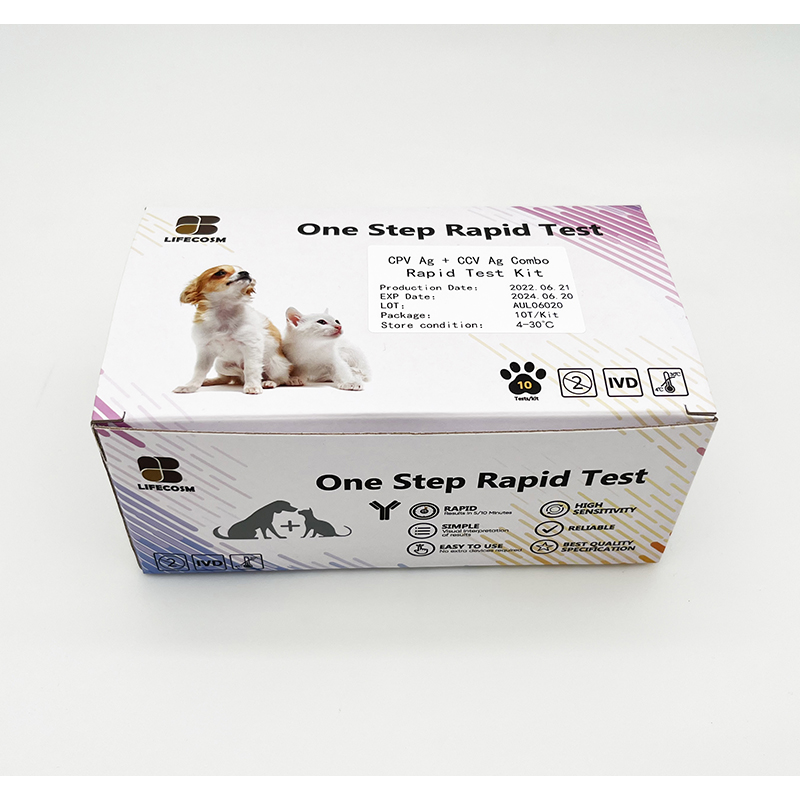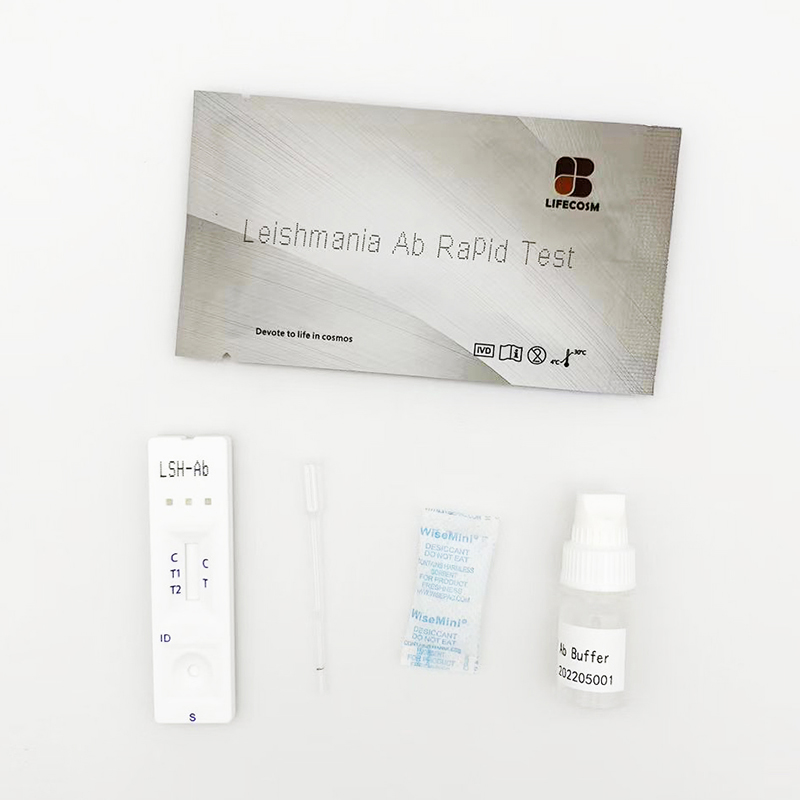
Products
2022 Latest Design Chlamydia Antigen Test - Lifecosm Feline Infectious Peritonitis Ab Test Kit to test cat FIP – Lifecosm
2022 Latest Design Chlamydia Antigen Test - Lifecosm Feline Infectious Peritonitis Ab Test Kit to test cat FIP – Lifecosm Detail:
FIP Ab Test Kit
|
Feline Infectious Peritonitis Ab Test Kit |
|
| Catalog number | RC-CF17 |
| Summary | Detection of specific antibodies of Feline Infectious Peritonitis Virus N protein within 10 minutes |
| Principle | One-step immunochromatographic assay |
| Detection Targets | Feline Coronavirus Antibodies |
| Sample | Feline Whole Blood, Plasma or Serum |
| Reading time | 5 ~ 10 minutes |
| Sensitivity | 98.3 % vs. IFA |
| Specificity | 98.9 % vs. IFA |
| Quantity | 1 box (kit) = 10 devices (Individual packing) |
| Contents | Test kit, Buffer bottle, and Disposable droppers |
| Storage | Room Temperature (at 2 ~ 30℃) |
| Expiration | 24 months after manufacturing |
| Caution | Use within 10 minutes after opening Use appropriate amount of sample (0.01 ml of a dropper) Use after 15~30 minutes at RT if they are stored under cold circumstances Consider the test results as invalid after 10 minutes |
Information
Symptoms
Ehrlichia canis infection in dogs is divided into 3 stages;
ACUTE PHASE: This is generally a very mild phase. The dog will be listless, off food, and may have enlarged lymph nodes. There may be fever as well but rarely does this phase kill a dog. Most clear the organism on their own but some will go on to the next phase.
SUBCLINICAL PHASE: In this phase, the dog appears normal. The organism has sequestered in the spleen and is essentially hiding out there.
CHRONIC PHASE: In this phase the dog gets sick again. Up to 60% of dogs infected with E. canis will have abnormal bleeding due to reduced platelets numbers. Deep inflammation in the eyes called “uveitis” may occur as a result of the long term immune stimulation. Neurologic effects may also be seen.
Transmission
Feline coronavirus (FCoV) is shed in the secretions and excretions of infected cats. Feces and oropharyngeal secretions are the most likely sources of infectious virus because large quantities of FCoV are shed from these sites early in the course of infection, usually before clinical signs of FIP appear. Infection is acquired from acutely infected cats by the fecal-oral, oral-oral, or oral-nasal route.
Symptoms
There are two main forms of FIP: effusive (wet) and non-effusive (dry). While both types are fatal, the effusive form is more common (60-70% of all cases are wet) and progresses more rapidly than the non-effusive form.
Effusive (wet)
The hallmark clinical sign of effusive FIP is the accumulation of fluid within the abdomen or chest, which can cause breathing difficulties. Other symptoms include lack of appetite, fever, weight loss, jaundice, and diarrhea.
Non-effusive (dry)
Dry FIP will also present with lack of appetite, fever, jaundice, diarrhea, and weight loss, but there will not be an accumulation of fluid. Typically a cat with dry FIP will show ocular or neurological signs. For example it may become hard to walk or stand up, the cat may become paralyzed over time. There could also be a loss of sight.
Diagnosis
FIP Antibodies indicate previous exposure to FECV. It is unclear why clinical disease (FIP) develops only in a small percentage of infected cats. Cats with FIP typically have FIP antibodies. As such, Serologic testing for exposure to FECV may be conducted if the clinical signs of FIP are suggestive of the disease and confirmation of exposure is needed. An owner may need such a confirmation to ensure that a pet is not transmitting the disease to other animals. Breeding facilities also may request such testing to determine whether there is a danger of spreading the FIP to other cats.
Product detail pictures:
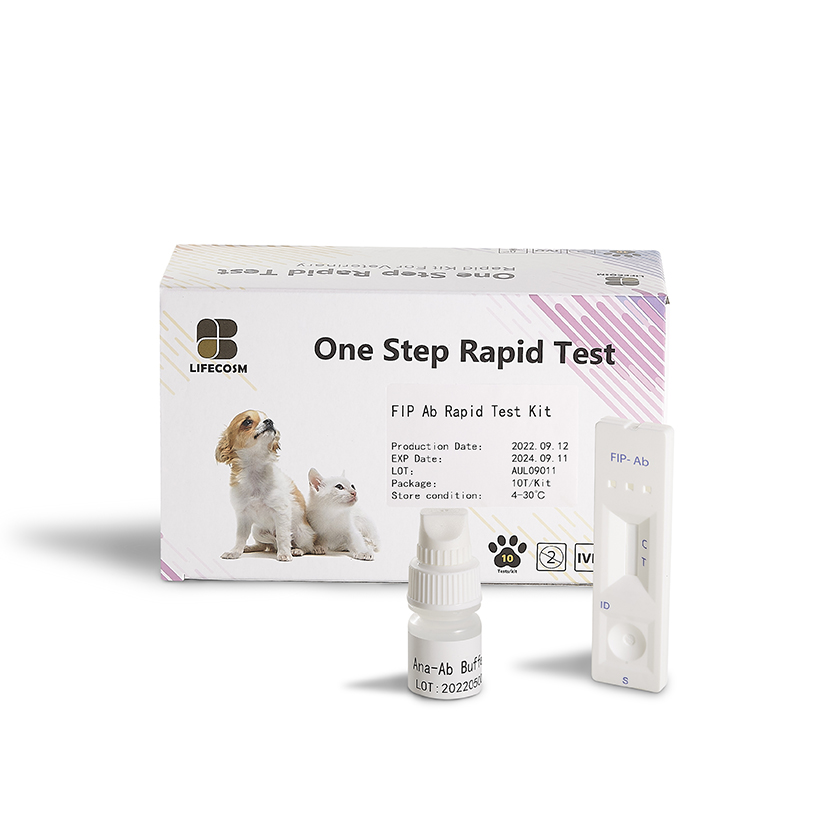
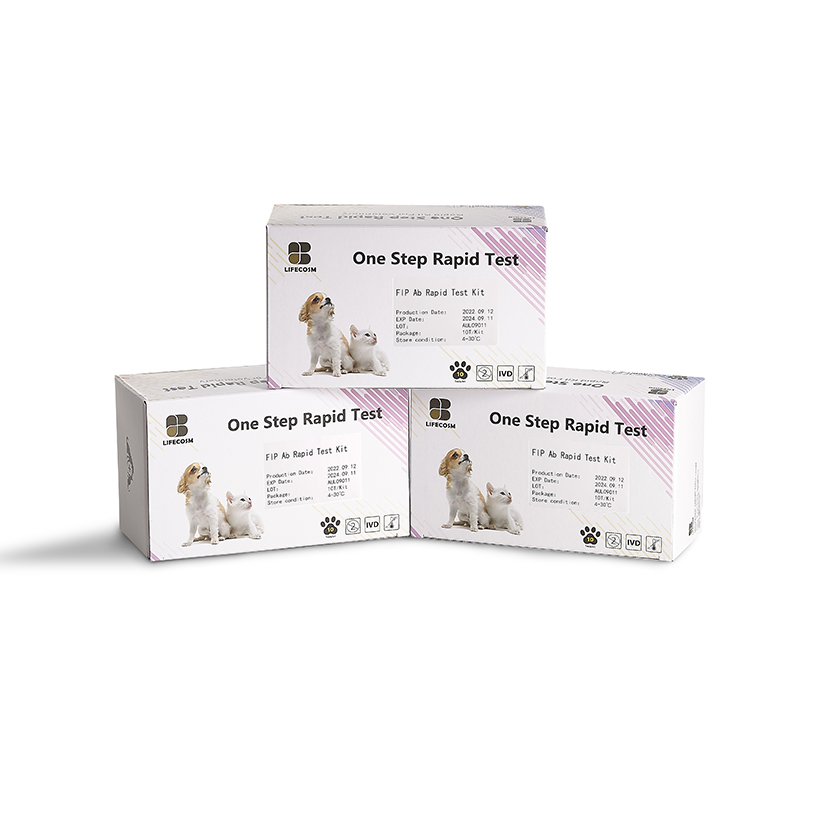
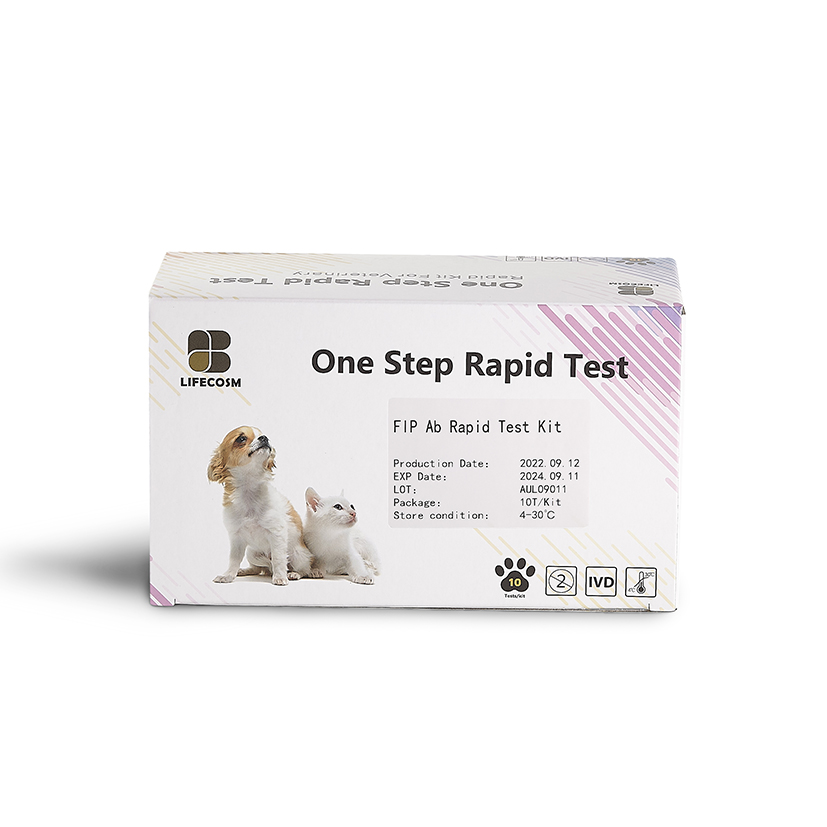
Related Product Guide:
Our company promises all buyers of the first-class products and solutions as well as most satisfying post-sale support. We warmly welcome our regular and new shoppers to join us for 2022 Latest Design Chlamydia Antigen Test - Lifecosm Feline Infectious Peritonitis Ab Test Kit to test cat FIP – Lifecosm , The product will supply to all over the world, such as: Porto, India, Estonia, With a wide range, good quality, reasonable prices and stylish designs, our products are extensively used in beauty and other industries. Our products are widely recognized and trusted by users and can meet continuously changing economic and social needs.
Speaking of this cooperation with the Chinese manufacturer, I just want to saywell dodne, we are very satisfied.

